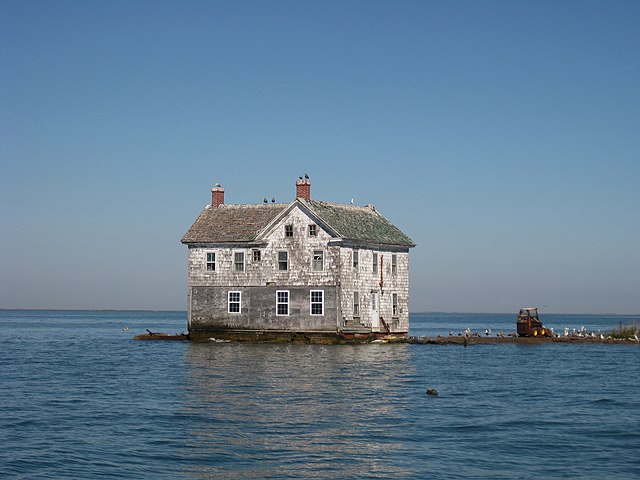A storm surge, storm flood, tidal surge, or storm tide is a coastal flood or tsunami-like phenomenon of rising water commonly associated with low-pressure weather systems, such as cyclones. It is measured as the rise in water level above the normal tidal level, and does not include waves.
Hurricane Ike storm surge damage in Gilchrist, Texas in 2008.
Total destruction of the Bolivar Peninsula (Texas) by Hurricane Ike's storm surge in September 2008
Coastal flooding occurs when dry and low-lying land is submerged (flooded) by seawater. The range of a coastal flooding is a result of the elevation of floodwater that penetrates the inland which is controlled by the topography of the coastal land exposed to flooding. The seawater can flood the land via several different paths: direct flooding, overtopping of a barrier, or breaching of a barrier. Coastal flooding is largely a natural event. Due to the effects of climate change and an increase in the population living in coastal areas, the damage caused by coastal flood events has intensified and more people are being affected.
Coastal flooding during Hurricane Lili in 2002 on Louisiana Highway 1 (United States)
Storm surge from Hurricane Carol in 1954
Tidal flooding on a sunny day, during the "king tides" in Brickell, Miami in 2016
The last remaining house on Holland Island that collapsed and was torn down in the 2010s as erosion and tides reached the foundation.






